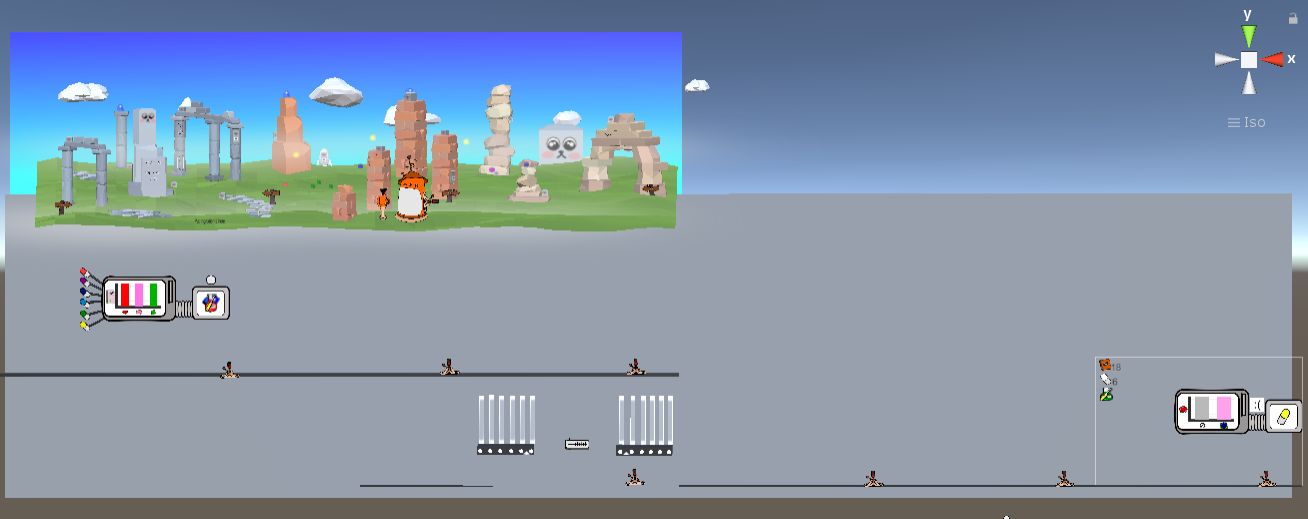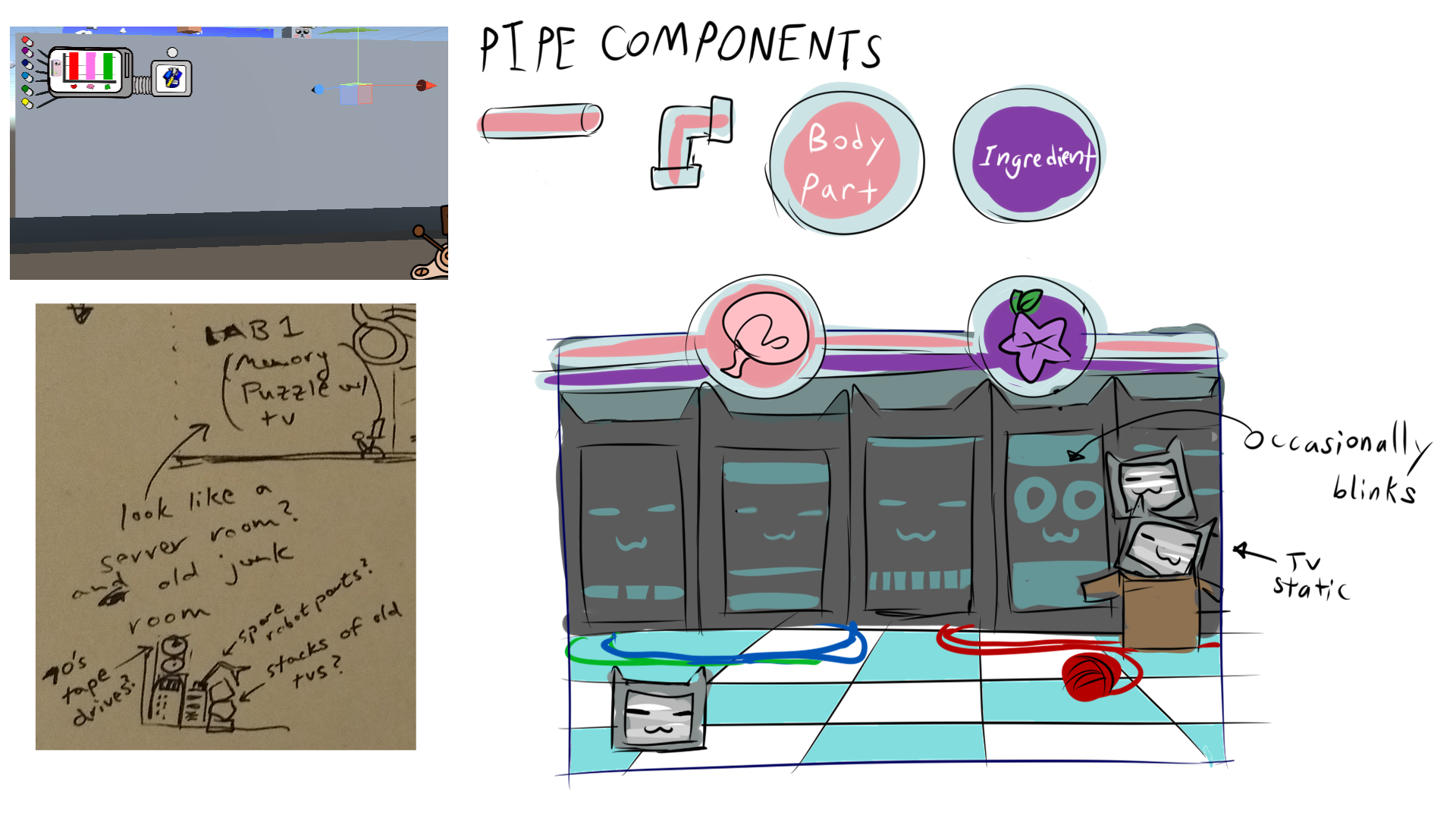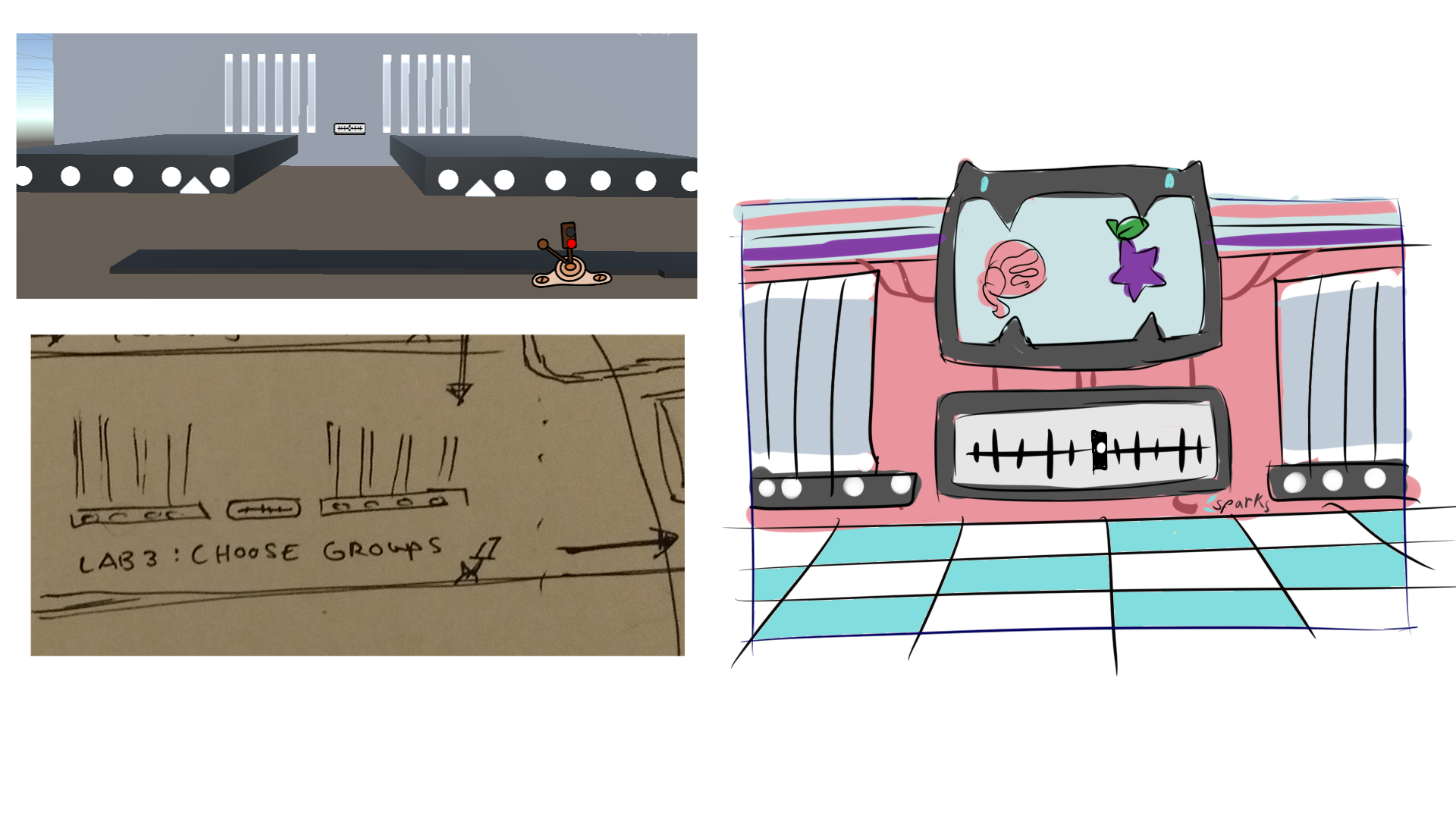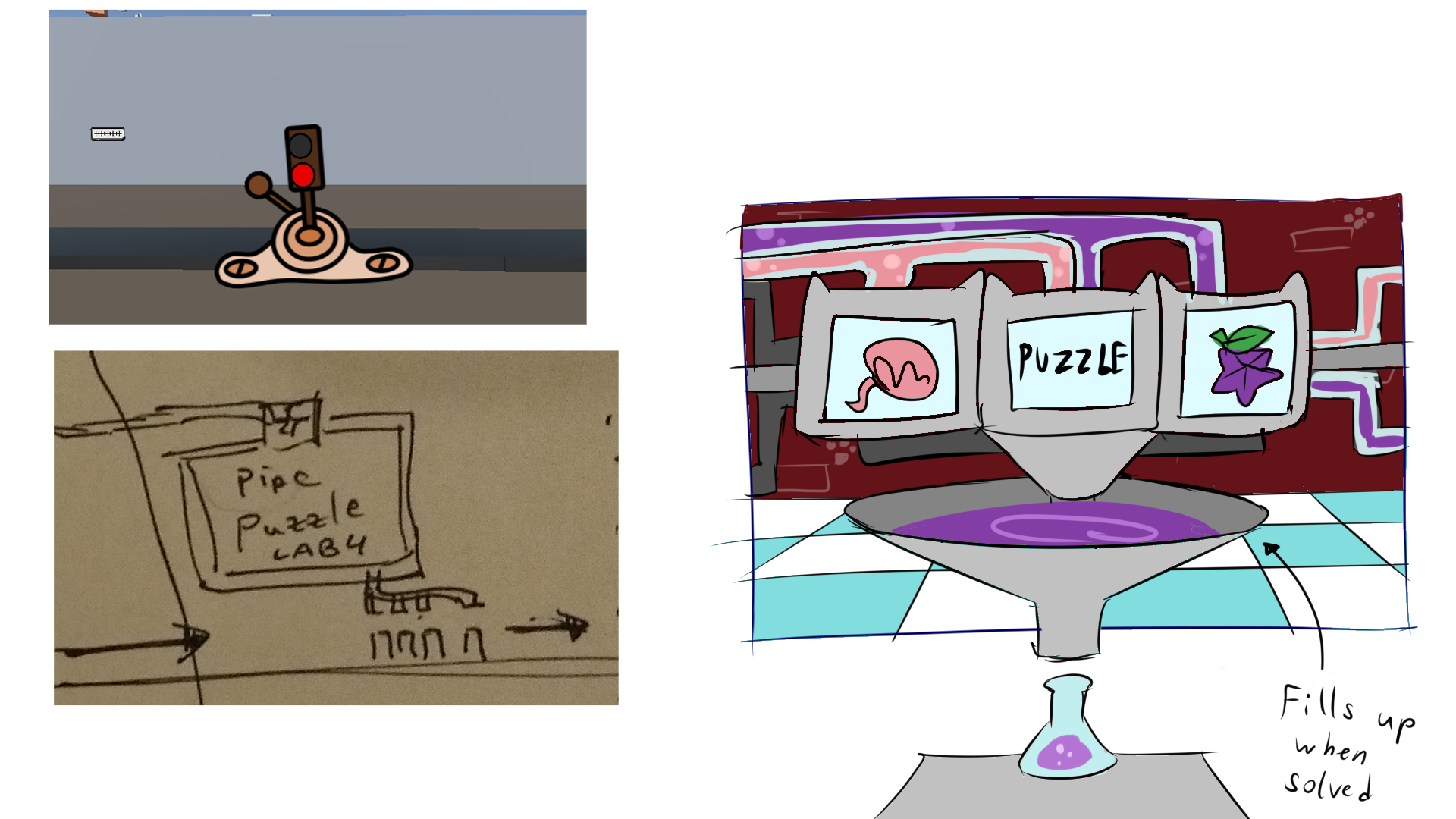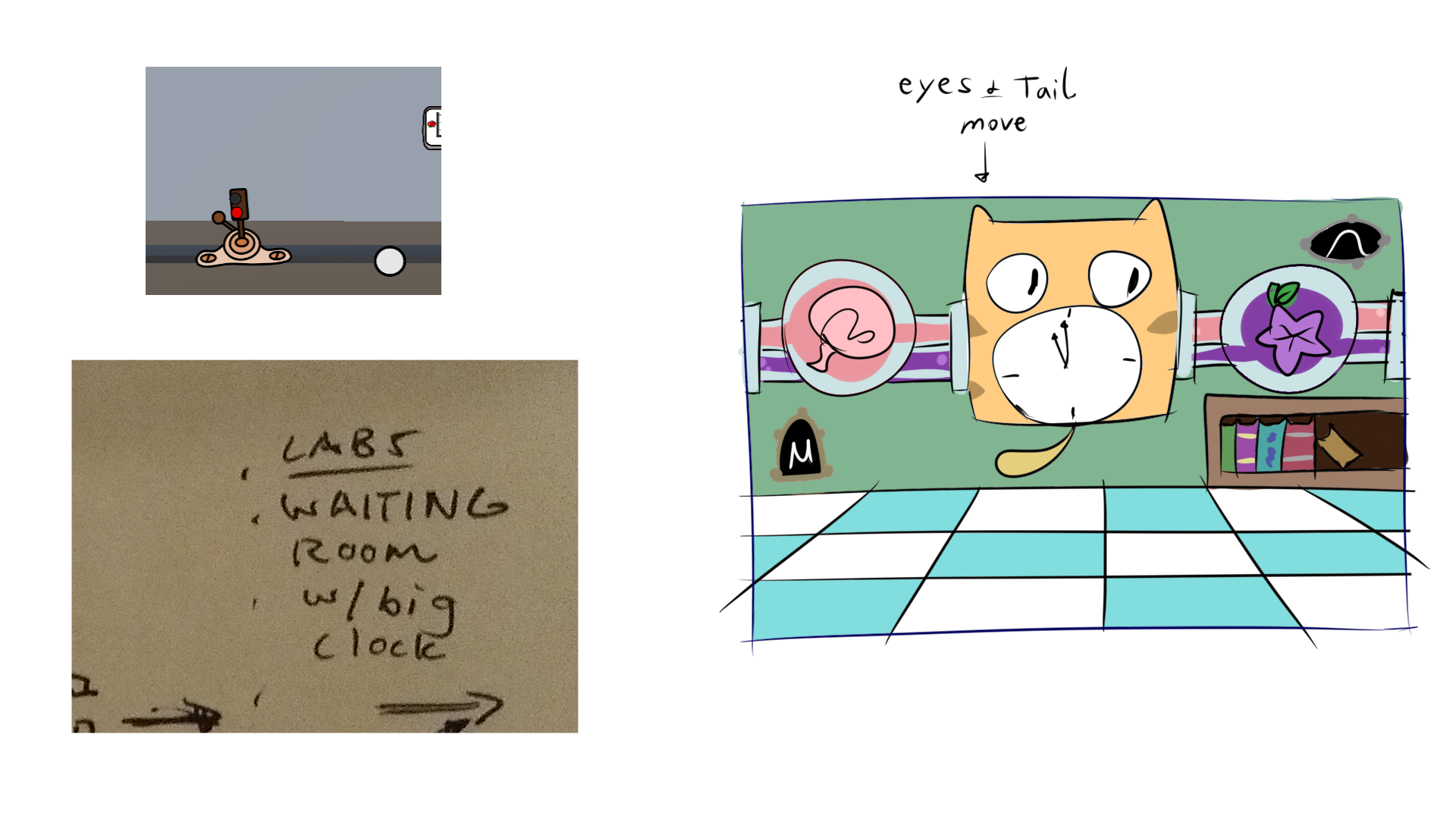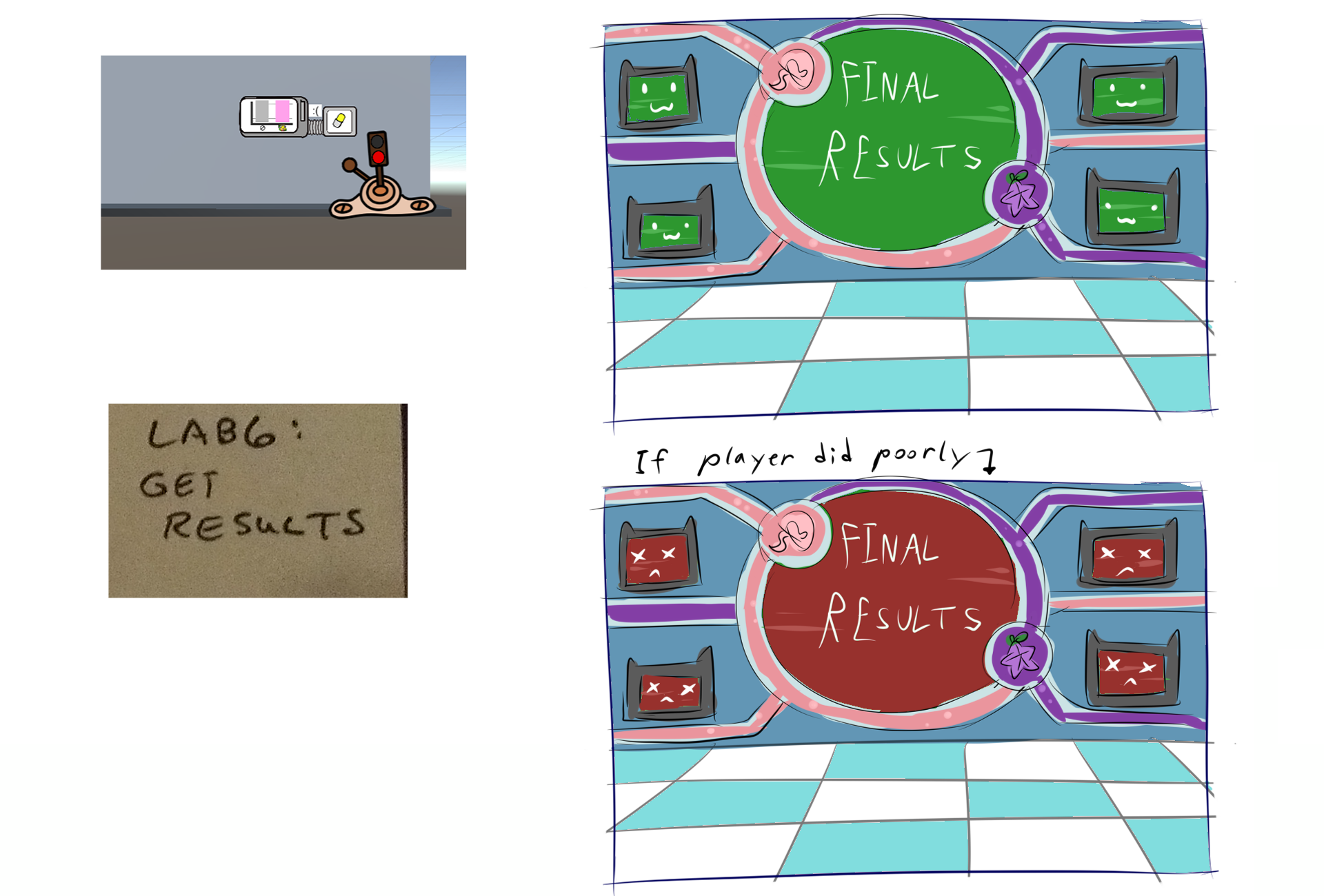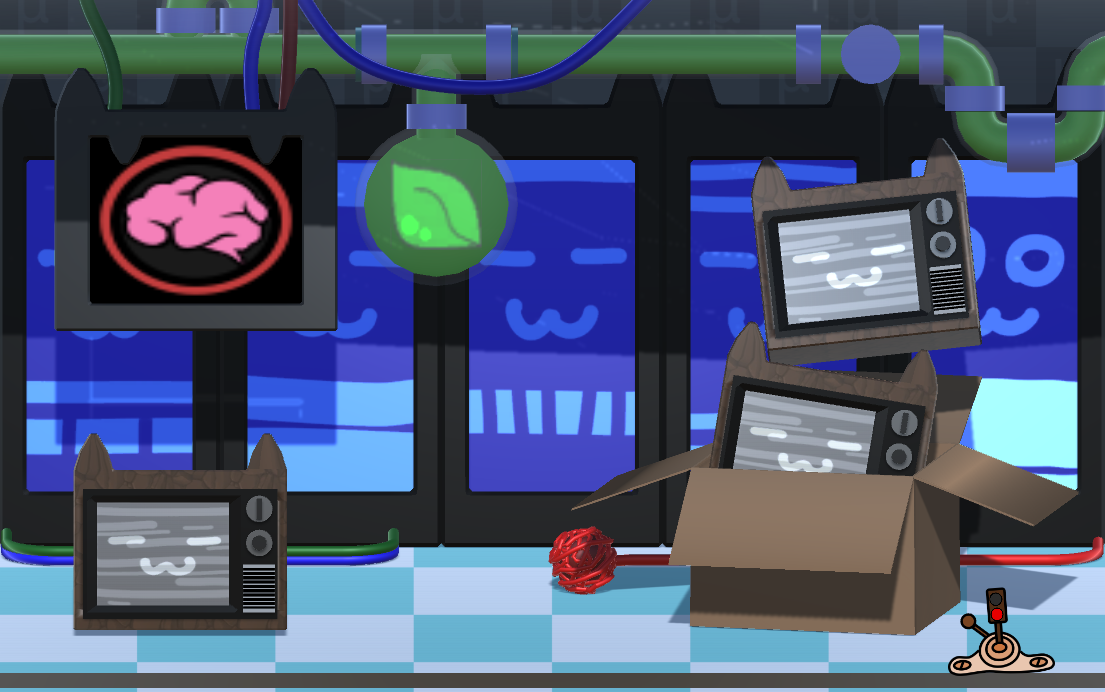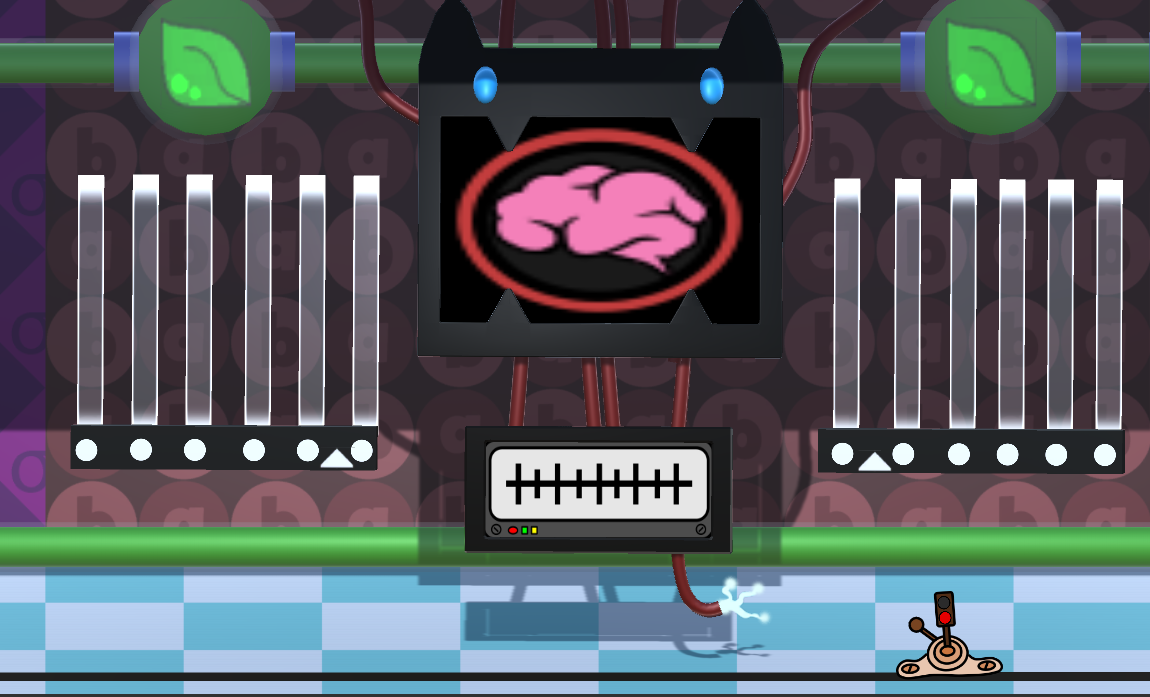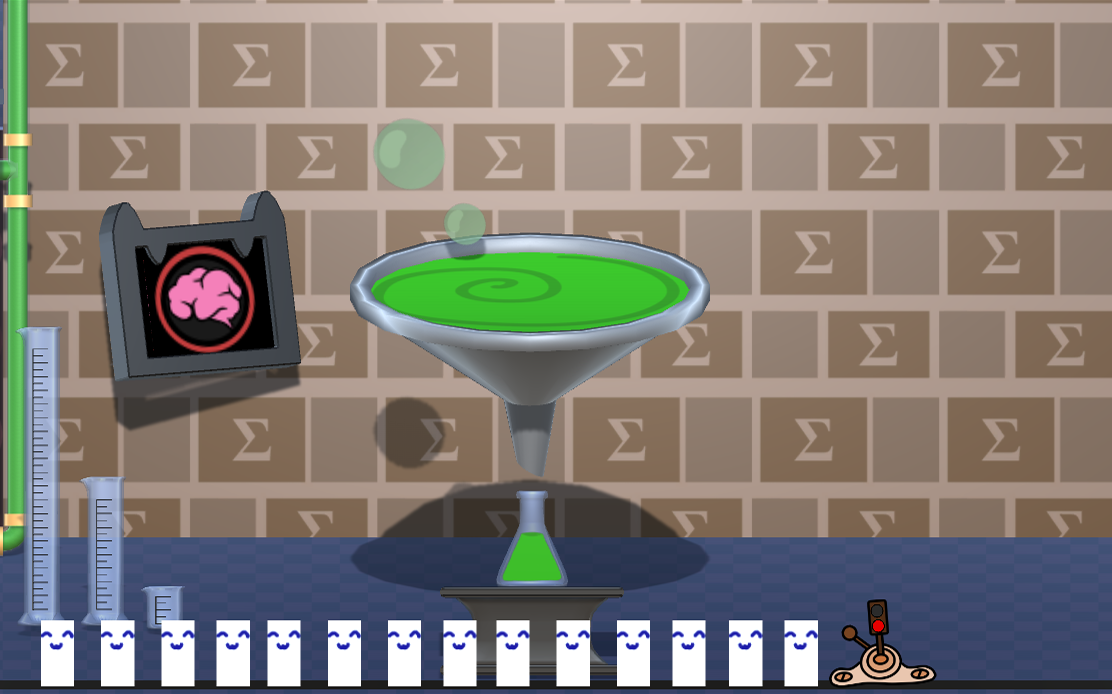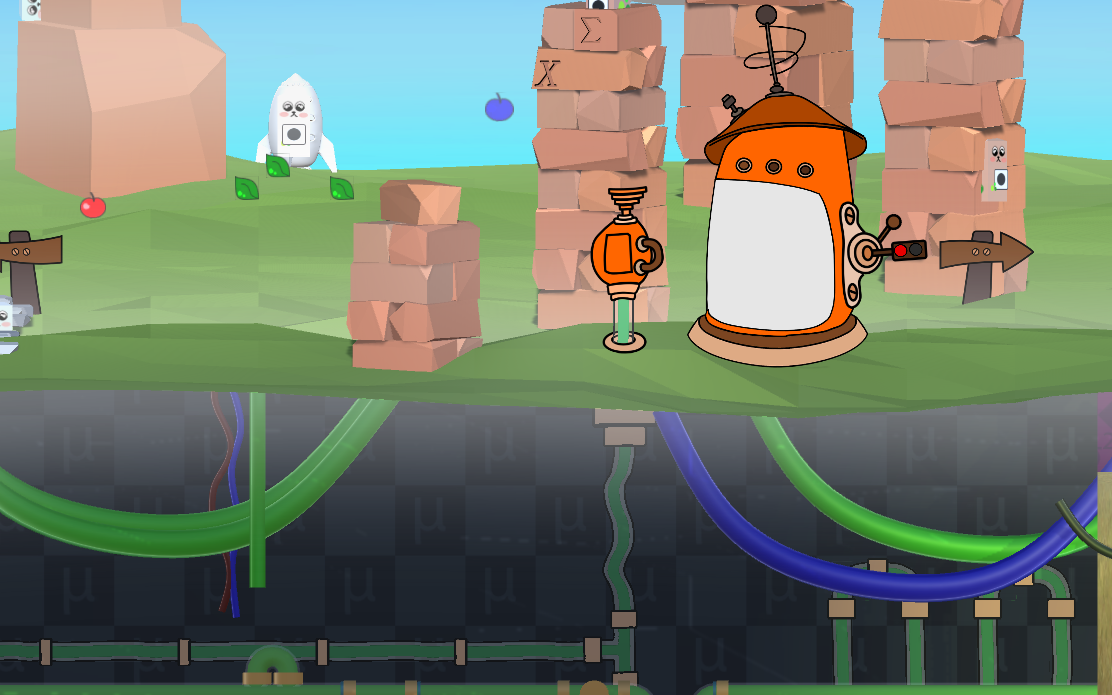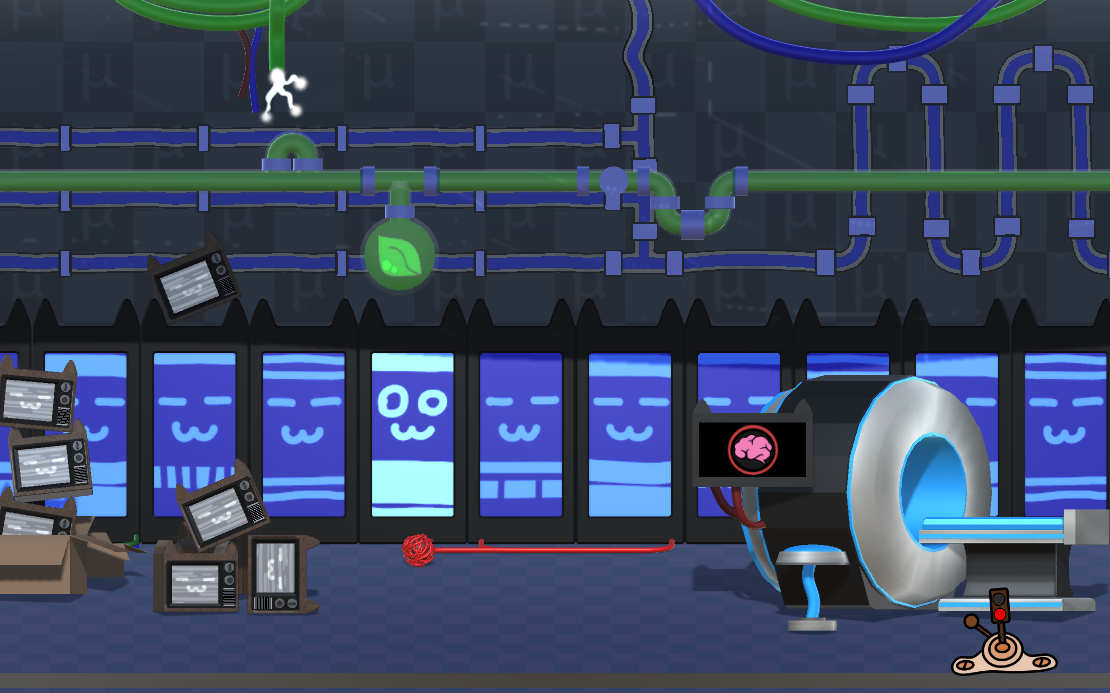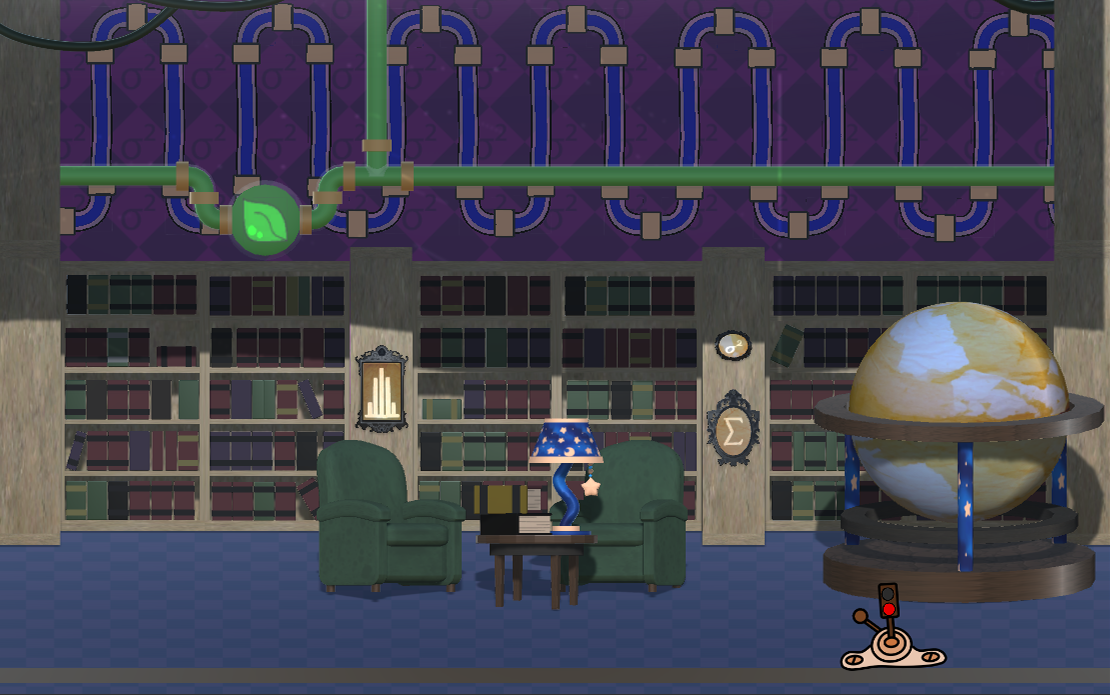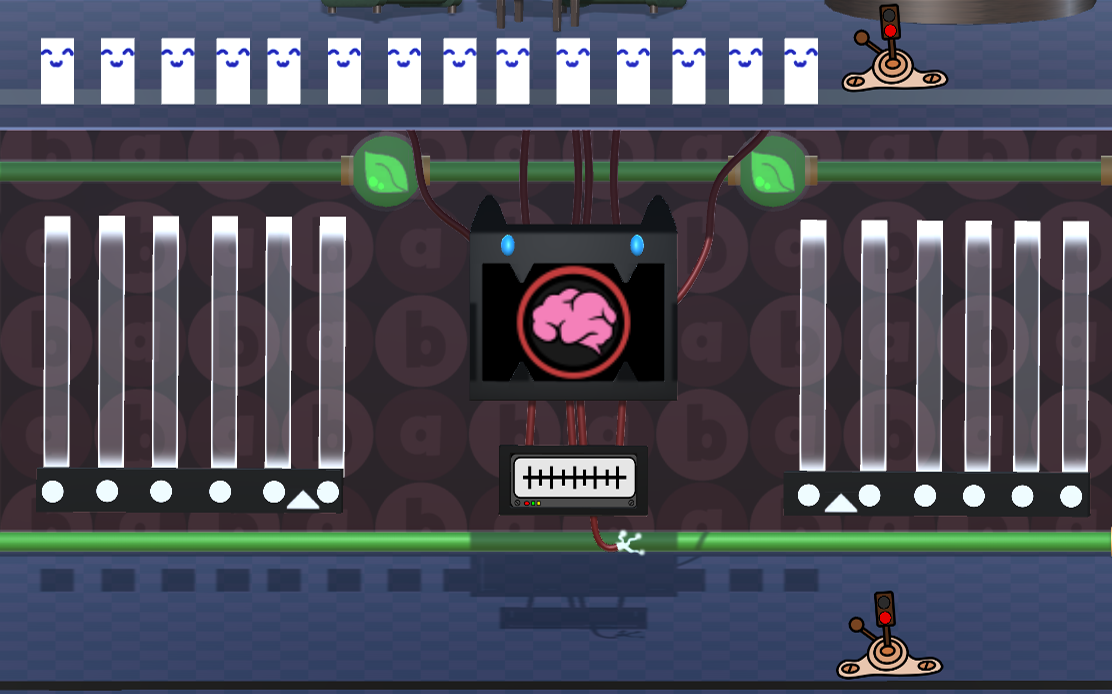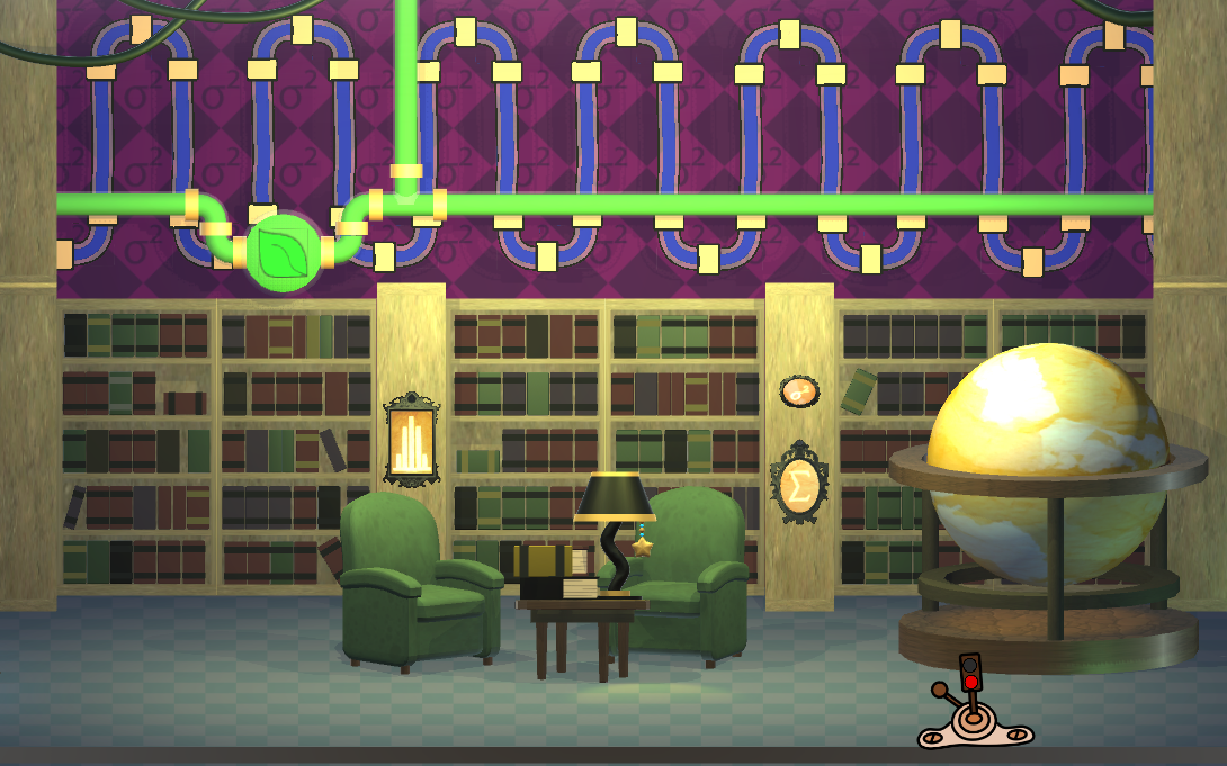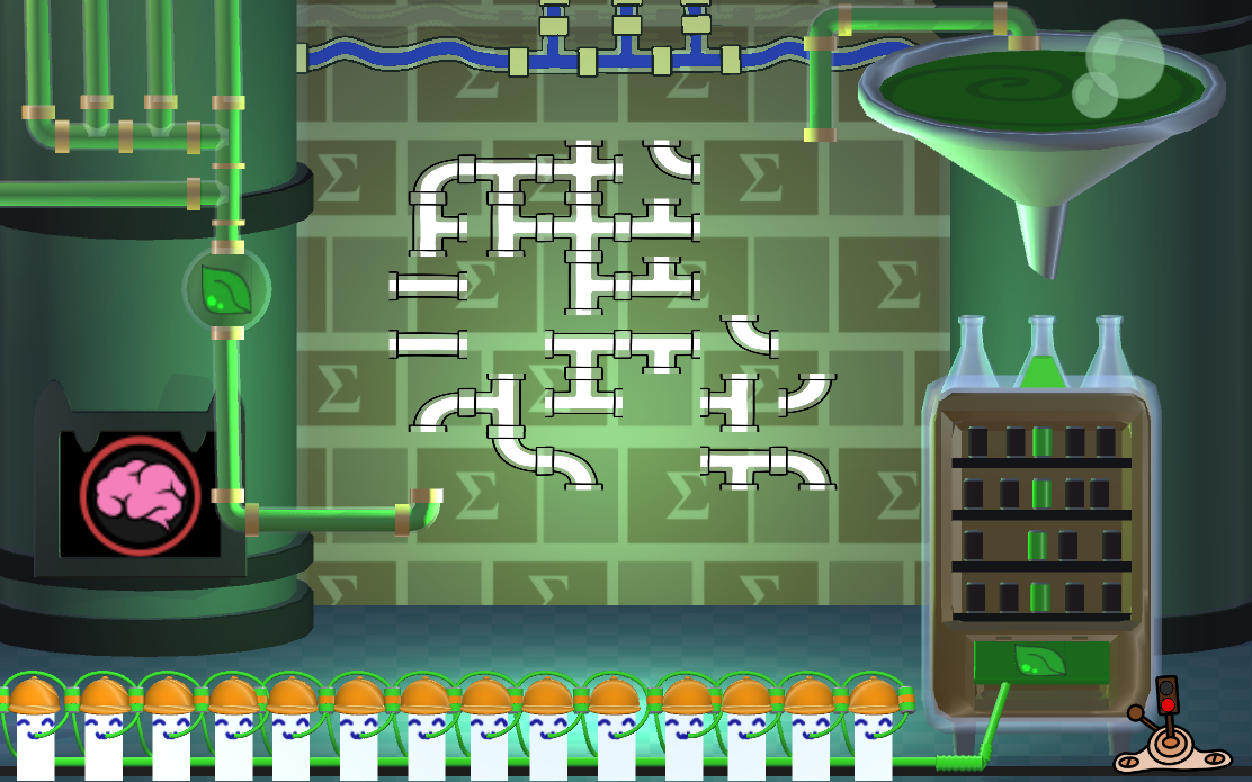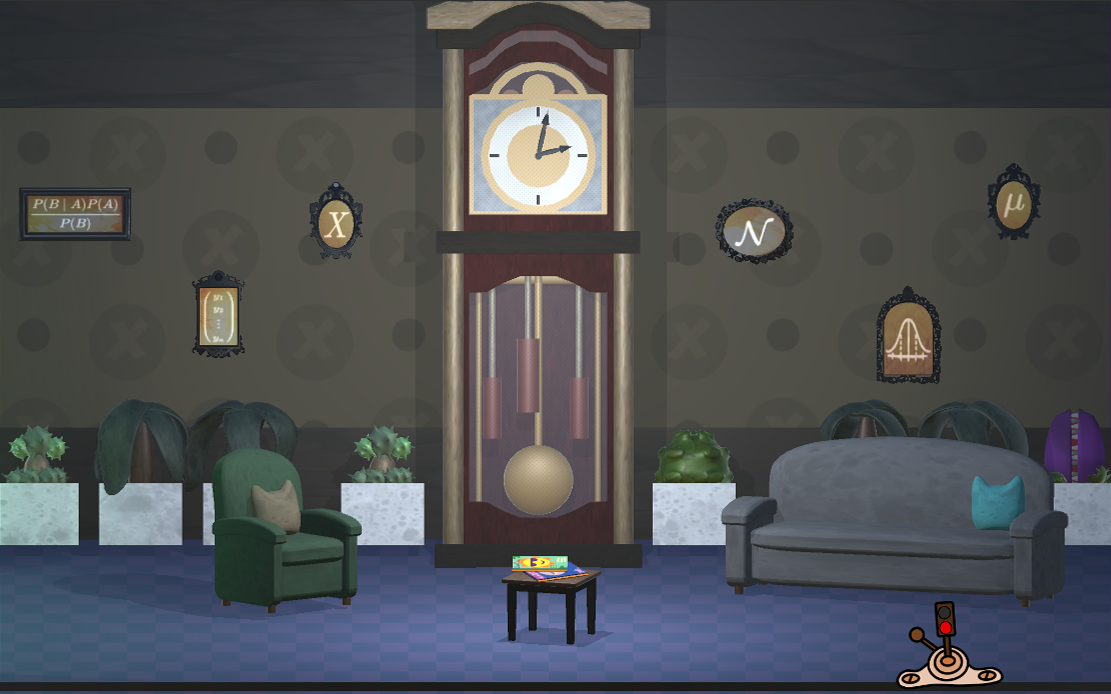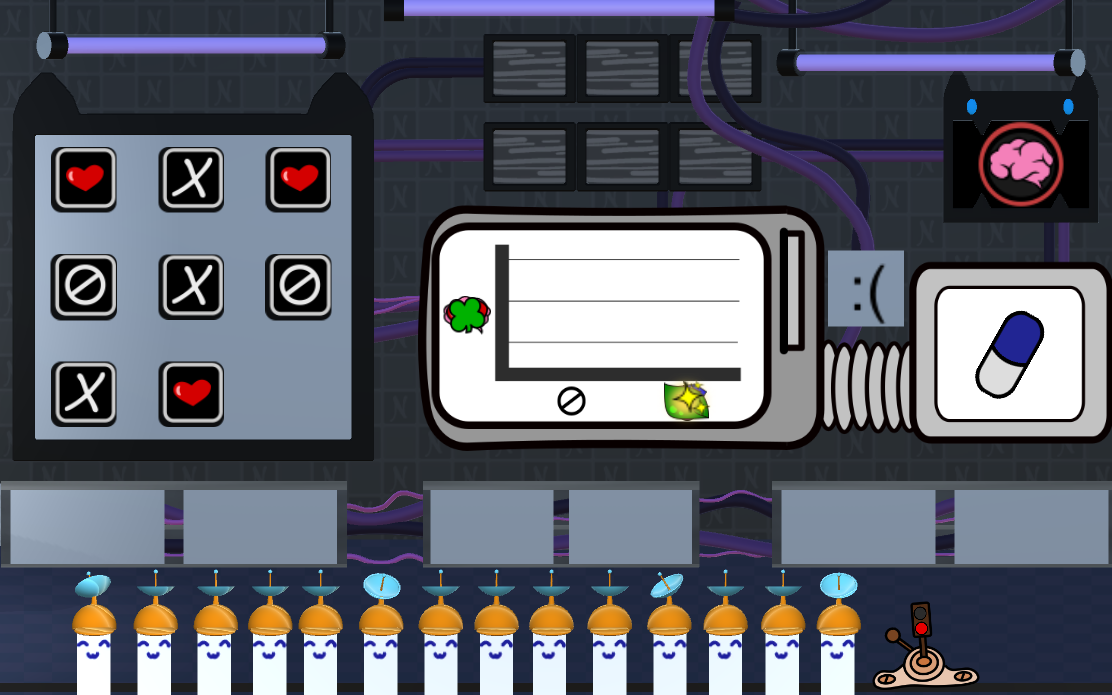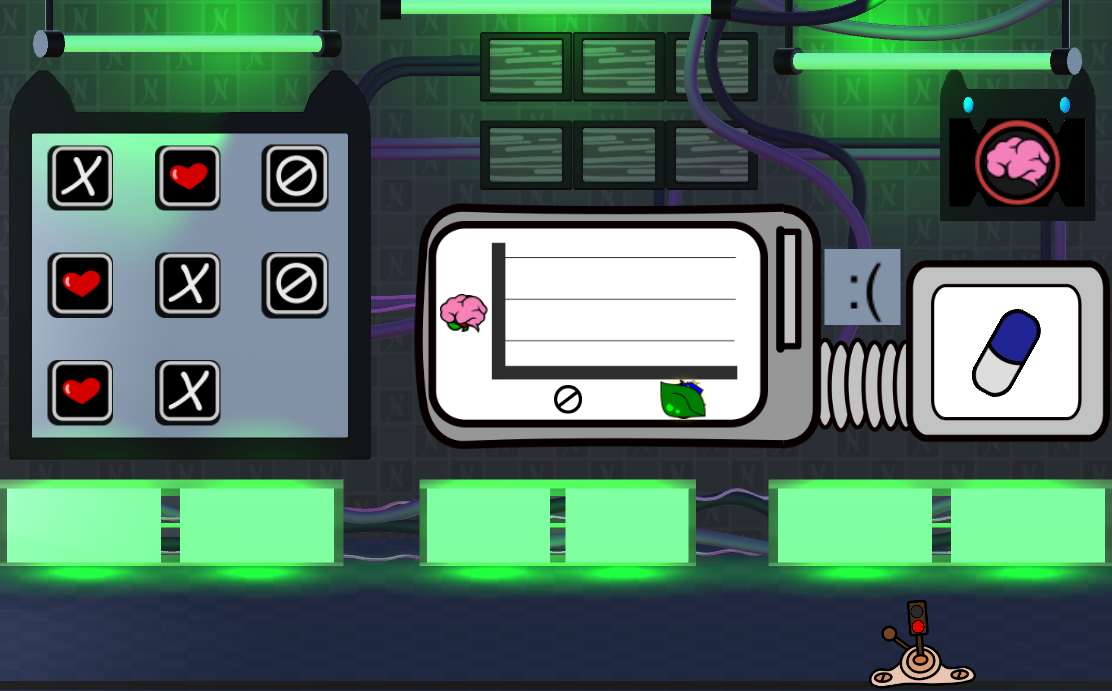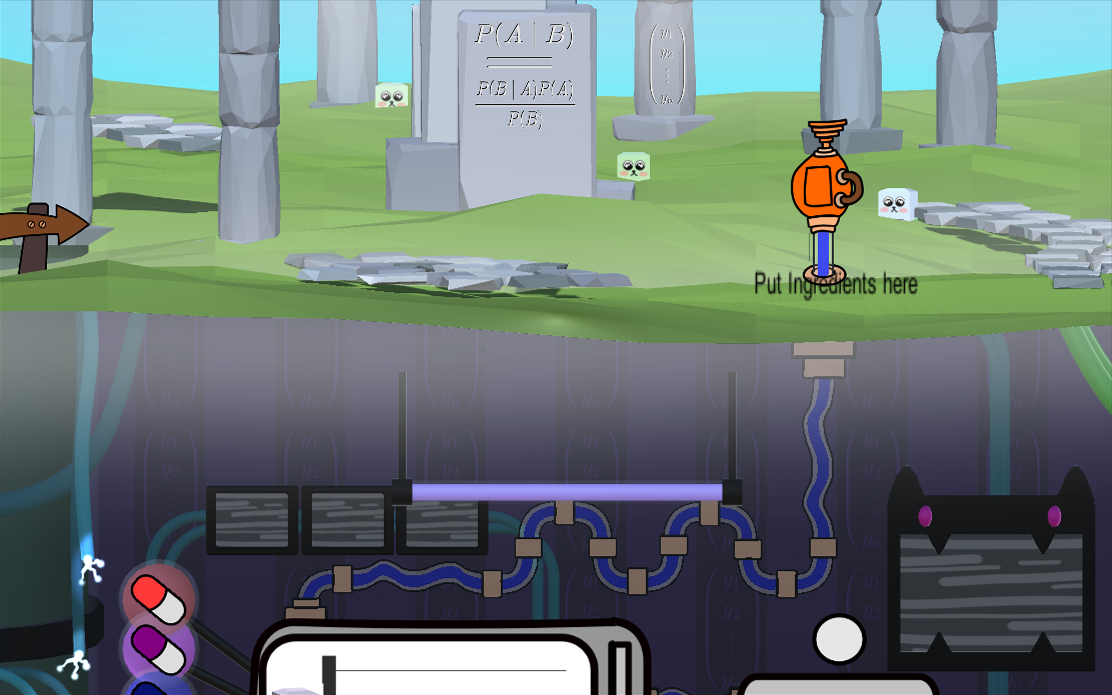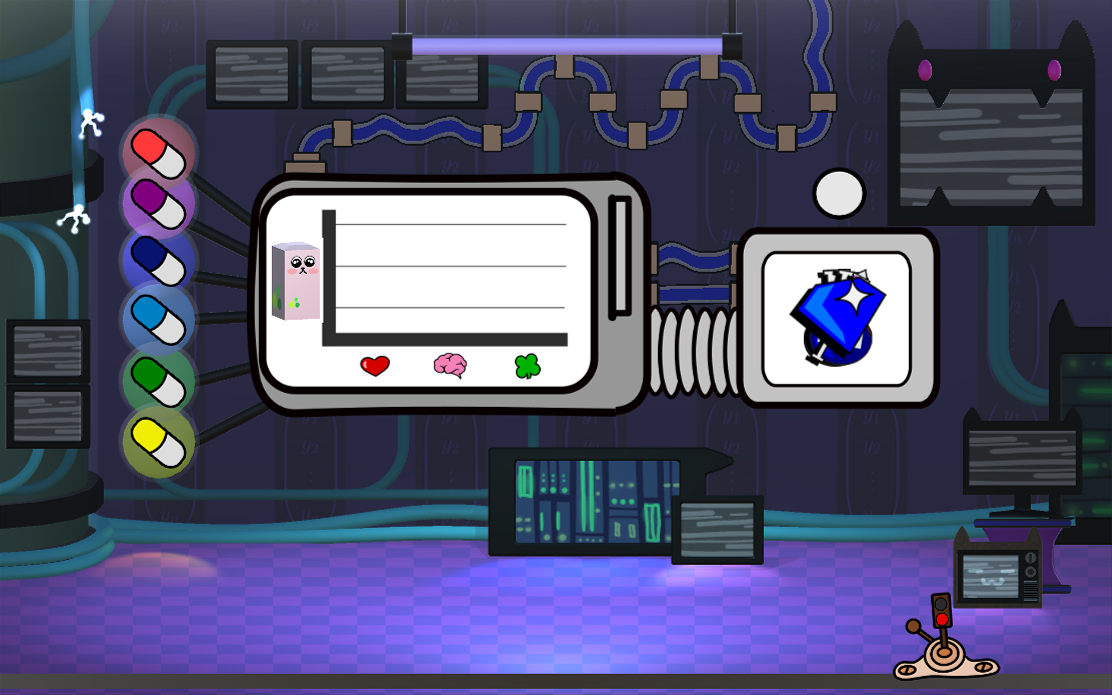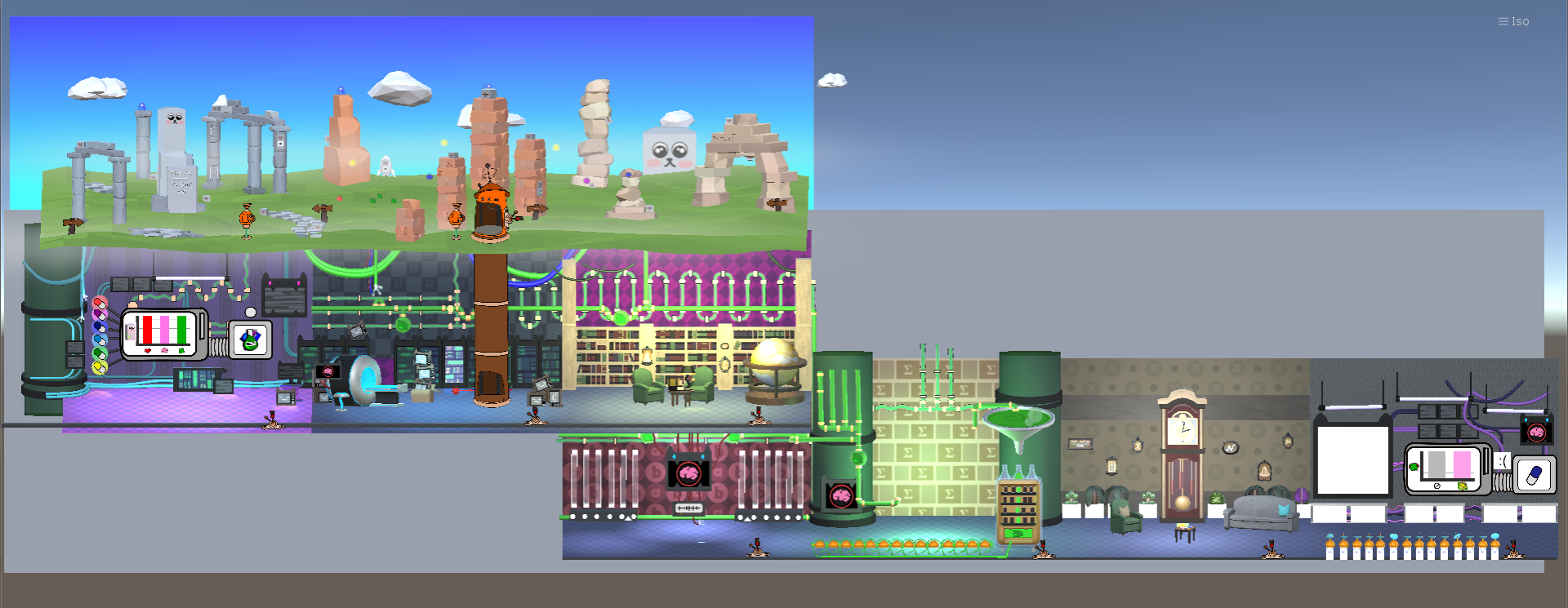Burples
Question: Math anxiety affects over 50% of the U.S. population. How can we provide a fun and engaging way to teach statistics to college students?
GOAL
Design an educational game to be tested and evaluated by college students, and integrated into a statistics and research methods college curriculum.
PARTICULARS
Role: 3D Designer with Savvy Sine | 3-person team | 2019-2020
Tools: Unity, Maya, Adobe Creative Suite
Technology: PC, Mobile
SUCCESS
A delightful product coming soon to New York University and Steam.
Inventing a curious new world
Your ship has crash landed on an alien planet. Burples, the sentient life form, would like to help you repair your spacecraft, but they have been mysteriously falling ill. It’s up to you to gather and apply the knowledge and ingredients to cure the burples.
This is the whimsical storyline the developer provided me, along with a Unity framework and surface level, and a visionary sketch of how the user should progress through laboratory rooms to conduct research on the burples.
I had the joy of turning this idea into an exciting, intuitive user experience. I drafted concept sketches attentive to each laboratory’s unique flavor, with considerations for a unified floor and overlapping elements to allow for seamless transitions between rooms. Color changing pipes and monitors provided intuitive visuals for current testing ingredients and Burple organs.
Prototype testing and iterating
I began creating and assembling the colorful ecosystem, the only external assets being the picture frames, fleshing out details as I worked in the game space now. Subtle 3D backgrounds contrast against brighter interactive 2D elements and puzzle cues. Monitors are clear displays for Burple organs, and pipes show the ingredient type via script-changeable liquid color and a bubble with the ingredient image.
Initial user testing found the user had difficulty knowing if they completed a puzzle because there was no feedback, so I integrated visuals and animations to signify success. For example, in Lab 4 when users successfully create a treatment from the ingredients, the liquid swirls and creates bubbles as an empty flask underneath is filled.
As I walked through each room with the developer, we realized at the fourth lab that there was a size discrepancy: The rooms were too big! I had not been working directly with the burples onscreen, as they were connected to puzzle visuals that would have been in the way during initial assembly. I quickly made some test burples to reframe the rooms for the next pass.
2D pipes, scripted with the ability to display the same ingredient colors as the 3D pipes, were added as an atmospheric backdrop and provided logical transitioning from a surface machine the user drops ingredients in to transfer them to the first lab.
An Intuitive design for the client and user
I further fine tuned details to render cohesive rooms with the important components standing out, adding atmospheric lighting and an elevator shaft to transport the burples to the first laboratory. The developer asked for a believable way to show the treatment being distributed to the burples in Lab 4, so I created a vending machine with a long straw that reaches all of them. This completed the first portion of the underground ecosystem.
After being given the treatment, the burples progress to a waiting room with comfortable chairs and pleasant plants. They finally move into a results lab, donning radars to measure their health. Depending on the user’s application of statistics and research sampling to this point, the lab lights will glow green if the treatment is successful, or red if it is not.
I was additionally excited to fulfill a request for the creation of a 7th bonus laboratory. This hidden room would only be accessible from the surface once the previous rooms were unlocked, and users who find it can conduct in-depth experiments on treatment efficiency. Bubbles displaying the ingredients light up as they are activated for testing, and pipe color between the interactive monitors changes depending on the ingredient mix.
With the completion of my organic laboratory ecosystem, I continued to assist the developer’s implementation of finishing touches with further refinement of interactive elements and environmental flow.
The Result
Burples is a game experience that invokes a sense of wonder and exploration. The user visits a world full of hidden panels and curious gadgets, inviting them to discover extra ingredients and find multiple ways to solve a puzzle. Users can learn research methods and statistics in a fun and engaging way, coming soon to a college curriculum or from home through Steam.

